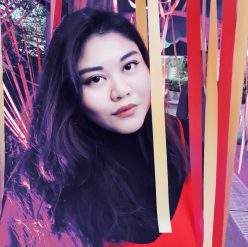It is no doubt that the art genre “social practice” has gained immense popularity over the past few years with artistes teaming up with non-profit organisations and this is also something that is very common in Singapore with practices such as Artsolute and Brack SG and even governmental initiations such as ones organised by the National Library Board Singapore, among many others.
The first statement that stood out to me was:
“If I was an artist, he said, why didn’t I come up with some kind of creative solution to issues instead of just telling people like him what they already knew. That was the defining moment that pushed me out of the studio.”
Artists often create works that are subjective – it could be abstract and present itself as art for the sake of art or it could be art with a message to put across. As an artist that has created billboards-size paintings, and cut out sculptures “dealing” with social issues, it makes me wonder why has Rick Lowe not once thought about working together with a social service to put his works and creativity into something that can actually deal with those social issues. As a creator passionate regarding social design, the first question that I always ask myself would be who is the target audience of my work and how can it serve them?
It is understandable that artists would want to raise the awareness of the particular social issue but it is much more important to begin the process of art creation, especially ones involving social issues, with ways as to how the artwork is able to raise awareness yet provide some sort of problem-solving to the issue.
The article then moved on to state, “PRH’s campus has grown from the original block and a half to six blocks, and from 22 houses to 40 properties; including twelve artist exhibition and/or residency spaces, seven houses for young mothers, artist residencies, office spaces, a community gallery, a park, low-income residential and commercial spaces.”
This statement struck me as problematic mainly because of the amount of houses available for the people in need in Houston. Despite the intentions being good, 40 properties that are meant for an array of demographics ranging from artist residencies to housing for young mothers to commercial spaces is simply not nearly as enough to solve the social issues that are rampant in Houston. The lack of vacancies is the main problem as over 33,000 online applications are received on the day of the application. This could cause some displeasure as the administration would have to thoroughly evaluate and pit the applicants with each other to see who is in much dire need of the housing. The variety of purposes for a wide demographic also poses a problem as this then sparks the question as to “what exactly is the Project Row Houses for?”. It is understandable to have commercial spaces as a means to gain income for the upkeep of the project but by having residencies, office spaces and residential spaces all at the same place, the purpose of serving a specific demographic and social issue is blurred.
Taking example from Dutch artist-activist Rebecca Gompert’s Women on Waves, a boat that provides abortions to women in countries where abortion is illegal, using the freedom granted by international waters, her project serves one demographic and provides one genre of service in addition to it being a non-stationary project. This project addresses a clear issue, appears to be fair as it covers disadvantaged places and most importantly it covers a substantial amount of people affected by the social issue. Comparing this to Project Row Houses, it has a stationary venue and the scarcity of the service offered is something that would be difficult to administer due to the high demand of service.
After reading this article, social practice becomes much blurrier as almost anything that is tied to addressing a social issue and creating a form of service to the people it is considered as “social practice” art. I also start to question if this is just solely based on the fact that artistes are the ones that initiated these movements thus, the name. Social services have always been coming out with programmes and initiations for their community but that is often seen as a social service provider and not a social practice art. So I wonder what is the ultimate qualifier for something to be considered a social practice art.
My final thoughts are, despite having the term being criticised, it is still possible to create meaningful art that are able to assist as many people as possible. This requires a thorough study of the social issue, the target audience and the demand present in the area. Artist Theaster Gates’s Dorchester Projects in Chicago where he revamped an abandoned property and transformed it into a cultural center with a library, archive, and Soul Food Kitchen is a good example of a communal space that doesn’t require people to apply and compete for vacancies yet it is also able to provide general support for the community which is far more meaningful than creating something for limited number of people when addressing a massive social issue.


Good review of some of the key points in the article Naddy. I would like you to show Artsolute and Brack SG during our discussion in class tomorrow.